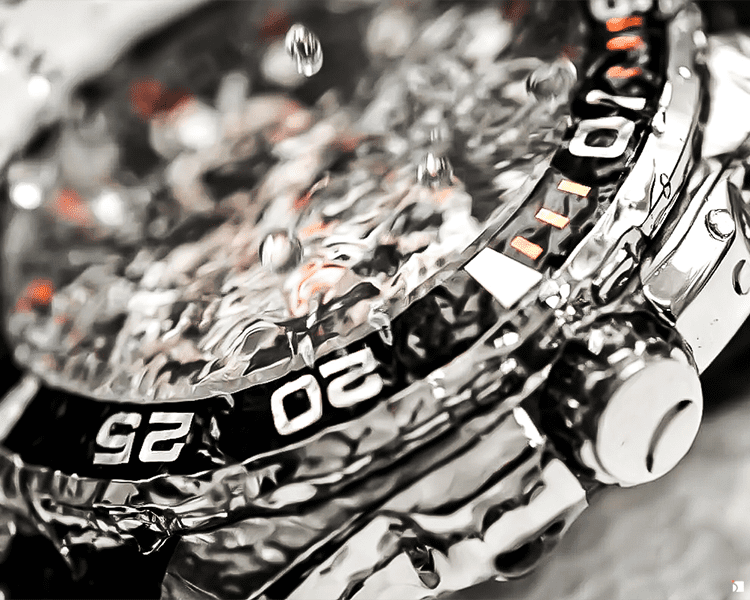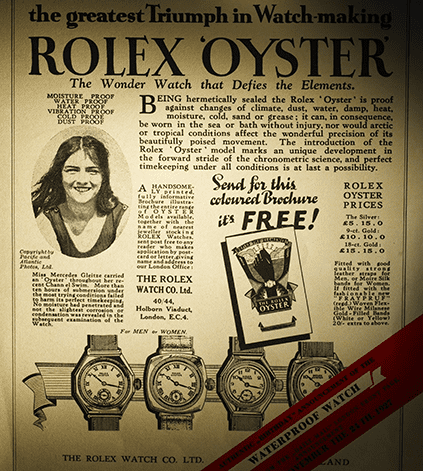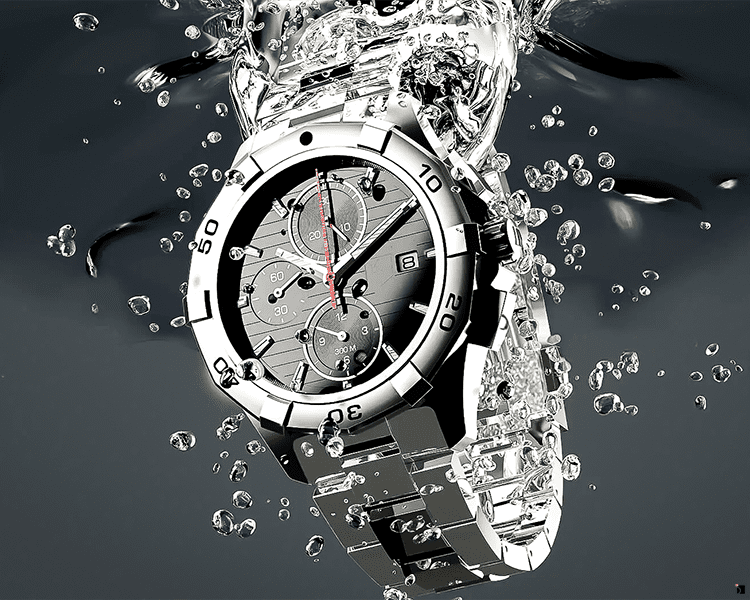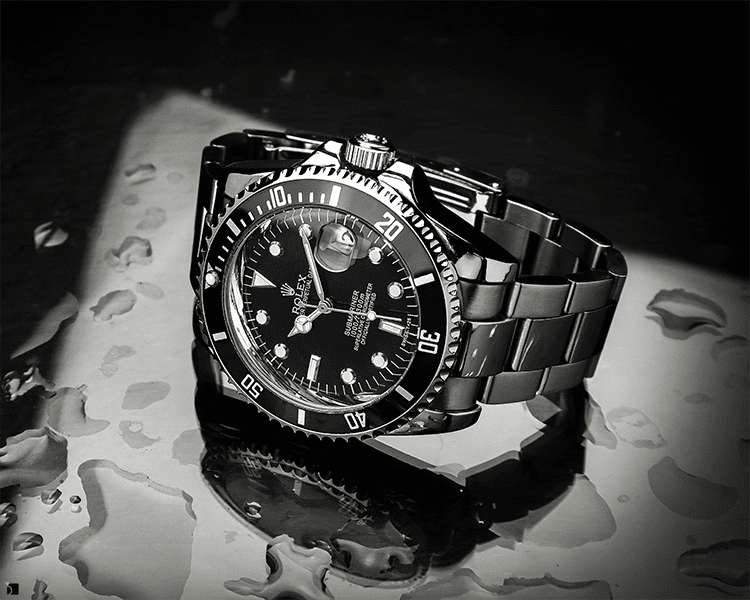You May Have a Water Resistant Watch, But Not All of Them Are the Same

Water resistance is a very confusing topic for many consumers. In fact, many consumers believe if their watch is marked water resistant, they can immerse it in water, which is not always the case, as there are many levels of water resistance. Water damage to the watch movement can be a very costly repair, and usually requires replacement of the movement, so it is essential to understand what your watch can handle.

A Brief History of Water Resistant Watches
The history of water resistant watches is quite a long and fascinating one, but we’ll give you the short version. Since the dawn of watchmaking, clocks and timepieces have been built to withstand dust and moisture and were advertised as such.
In 1926, the first-ever “waterproof” watch was born. The Rolex Oyster was created by Hans Wilsdorf and his brother-in-law Alfred Davis, the founders of Rolex in London. This invention wasn’t exactly a watch, but a “waterproof” casing for watches. The case made it possible for a watch to be “waterproof” by screwing down the bezel and back of the case, along with a winding crown against the middle case. This piece became a huge stepping stone for the future of watchmaking and paved the way for contemporary watchmakers everywhere.

Believe it or not, however, there really isn’t such thing as a “waterproof” watch. In light of the understanding that a truly waterproof watch is virtually impossible, the term “waterproof” is not used for watches today. The term “Water Resistant” is now used along with a test for water resistance (atmospheres/meters/feet), which gives an idea of how water resistant a watch is.

Why Water Proof Doesn’t Really Exist
Water resistance for watches is a very confusing topic for most people. Many believe that water resistant means waterproof, and nothing is farther from the truth. In fact, no watch should be called waterproof since it implies that water will not be able to enter the watch under any circumstance, and there is a limit to the amount of water pressure a watch can withstand.
There are levels of water resistance, and these levels can be expressed in different terms, for example, ATM (atmospheres) or meters are the most commonly used as well as bars, and feet.
Understanding the water resistance rating is an important part of knowing what type of activities can be done while wearing your water-resistant watch. See the Water Resistance Guide below.
1 ATM or Bar = 10 meters
1 meter = 3.3 feet


How Do You Know If Your Watch is Water Resistant, and to What Level?
Most watches have the water resistance level stamped on the case back, and some even have it on the dial. If the watch is just marked water resistant without a level, then it is considered splash resistant and should not be submerged in water.
Why is this important? If the watch movement (or the time-keeping mechanism) is exposed to water or moisture it can be damaged.

It is important to know that water resistant watches have gaskets that prevent water or moisture from entering the watch, and over time these gaskets can become worn or damaged and no longer protect the watch. Most watches have at least 3 gaskets, the crystal gasket, case back gasket, and crown gasket and if your watch has additional buttons for advanced functions these buttons would also be protected by a gasket. Protecting the gaskets from damage can prolong the water resistance of your watch, so watches should never be exposed to a sauna or hot tub since exposure to heat can easily damage the gaskets, and never be worn in the bath or shower since soap can also damage the gaskets.

Types of Water Resistance Testing
The 2 most common water resistance tests are the “Dry Test” in which the watch is tested using air pressure, and the “Wet Test” in which the watch is tested using air pressure and water. The “Wet Test” is usually used to determine a problem area of a watch that failed the “Dry Test.”
Here are just a few more guidelines to follow in order to protect your watch from water damage:
- Always take your watch to a certified watchmaker at the first sign of water damage or moisture under the crystal.
- Do not expose your watch to extreme temperature changes.
- Do not wear your watch in a hot tub, sauna, or hot shower.
- Do not expose your watch to corrosive chemicals or swimming pools with highly chlorinated water.
- Never open, wind, or operate the crown while in water or press the buttons of a chronograph watch while in water unless deemed okay by the manufacturer.

Remember, not all watches require repair, but all watches require routine care and maintenance.
Updated 7/20/22
Resources:
- Water resistant watches: https://www.longines.com/
- A Guide to Watch Water Resistance: https://www.firstclasswatches.co.uk/
- ¹Image via Rolex: https://www.rolex.com/
- Blog outline and revising assisted by AI resources such as Google Gemini.

My Jewelry Repair
We Restore Memories
My Jewelry Repair is a Premier Authorized Service Provider
Our Certified Watchmakers and Technicians will ensure your watch is serviced professionally under manufacturer standards, and you will have a properly working watch to pass on to your loved ones for generations to come.
Our Watch Repair Service Center is authorized to service:
Bulova
Montblanc
Movado
Victorinox
And more brands are joining all the time!

For more information about our Watch Repair services, click here.

Beautiful ❤️ Time is of the essence ????????????